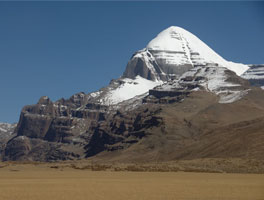 |
Dear readers,
Welcome to the Climate Weekly newsletter by the Centre for Science and Environment’s Climate Change programme and Down to Earth.
The Pradhan Mantri Kissan Urja Evam Utthaan Mahabhiyaan (PM-KUSUM) scheme, which aims to solarize agriculture in India, has made only modest progress since its launch in 2019, meeting just 30% of its targets until June 2024. With the deadline of 2026 approaching, a new report by CSE’s renewable energy programme underscores the urgent need for recalibration to meet the scheme’s goals. The report highlights the scheme’s potential to reduce carbon emissions by 46 million tonnes per year. The scheme is divided into three components: (A) installation of mini-grids on barren lands, (B) installation of off-grid solar water pumps to replace diesel water pumps, and (C) installation of on-grid solar water pumps to replace electric water pumps and mini-grids for agricultural feeder solarization. The report offers a detailed analysis of the scheme’s performance across states, including Haryana, Punjab, Rajasthan, and Chhattisgarh. Key findings reveal that while farmers who have adopted solar water pumps are generally satisfied, experiencing savings and improved irrigation flexibility, one of the challenges is the availability of cheaper electricity to farmers, which disincentivizes them from switching to solar pumps. However, this cheap electricity has its downside—it leads to increased subsidy burdens for the state. The report cites other challenges, including the centralization of implementation in some states and the mismatch between pump sizes and farmers' actual needs. To address these issues, the report recommends decentralizing implementation, increasing financial assistance, and allowing farmers to pay upfront costs in instalments to enhance financial viability. “Rajasthan's decentralized implementation model, particularly with the horticulture department's involvement, has made Component B implementation seamless. This approach has improved services to farmers, as department field staff maintain regular contact,” said Vaani Khanna, of CSE’s Renewable Energy Programme, and the report’s author. “This model could be replicated in other states, where agriculture or horticulture departments could oversee Component B implementation,” she added.
As India prepares to launch its new carbon credit trading scheme, CSE’s Industrial Pollution Programme will host release its report this week. Register for the event.
And you can watch the 7th episode of the Sunita Narain Show on extreme rainfall and unplanned development in the mountains in India.
|
|
 |
| |
 |
|
| |
 |
 |
| |
By - Trishant Dev
Climate Change, CSE
|
| |
|
 |
|
|
| |
 |
|
| |
| EXTREME WEATHER TRACKER |
| |
Climate change reason for heavy rains and cloud bursts in the Trans and High Himalayas: Report, 8 August 2024
|
 |
 |
|
|
| |
 |
|
| |
 |
 |
Adverse weather events impact 84% districts in India, heatwave days increased 15X between 1993-2022: Study, 8 August 2024
|
|
|
| |
|
|
| |
|
|
| |
 |
|
| |
|
|
| |
|
|
| |
 |
|
| |
|
|
| |
|
|
| |
 |
|
| |
|
|
| |
|
|
| |
 |
|
| |
|
|
| |
|
|
| |
|
|
| |
 |
|
| |
CLIMATE NEWS | SCIENCE| IMPACTS| POLITICS |
|
| |
 |
|
| |
|
|
| |
 |
|
| |
|
|
| |
 |
|
| |
|
|
| |
 |
|
| |
|
|
| |
 |
|
| |
|
|
| |
 |
|
| |
|
|
| |
 |
|
| |
|
|
| |
 |
|
| |
|
|
| |
 |
|
| |
|
|
| |
 |
|
| |
|
|
| |
 |
|
| |
|
|
| |
|
|
| |
|
|
| |
|
|